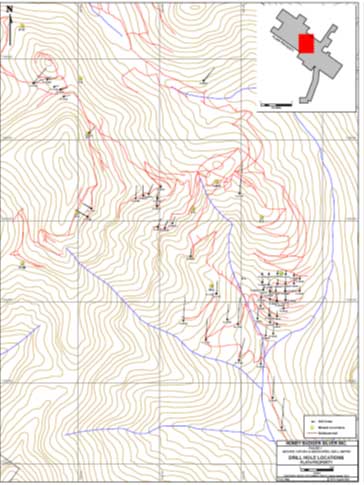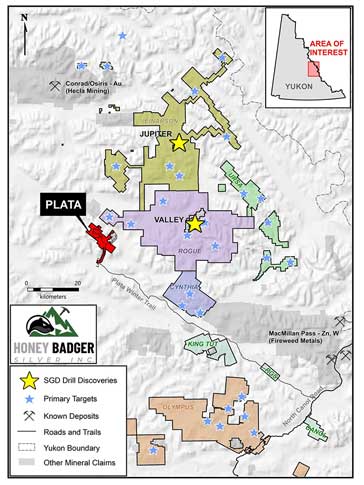About the Plata Silver Property
The Plata Silver Property is a historic producer of high-grade silver ore. Exploration has identified thirty-two mineralized zones hosting high-grade silver, gold, lead and zinc-bearing veins and stockworks. Silver mineralization at Plata is believed to be associated with the Mayo and Tombstone intrusive suites and is in a similar geologic setting and adjacent to Snowline Gold’s recently discovered Rogue Project. Rogue is characterized as a Reduced Intrusive Related Gold System (RIRGS) deposit. Mineralization at Plata is consistent with the periphery of a RIRGS-type deposit and is interpreted as potentially the distal portion of such a deposit.
Samples were submitted to ALS Minerals in North Vancouver. Multi-element analysis was completed for rocks and drill core by ME-ICP61, and soils by ME-ICP41. Gold analysis was completed using AU-AA25. Overlimit samples were analyzed using ME-OG62 respectively. All analysis passed standard QA/QC procedures.
High priority target areas at Plata include
- P-4 Zone: The P-4 Zone has undergone more extensive drilling relative to other targets at Plata and demonstrates continuous mineralization over 200 metres of strike length that remains open in all directions. Average grades and widths from fourteen (14) core drill holes in 1987 were 1.9 metres grading 337 g/t silver, 3.65 g/t gold, 1.59% lead and 1.7% zinc.
- P-3 Zone: At the P-3 Zone, rock samples have returned extremely high gold assays (up to 78.3 g/t) and chip sampling returned 1.96 metres grading 2,383 g/t silver, 9.85 g/t gold and 7% lead.
- P-6 Zone: Drilling in 2011 confirmed the continuity of significant polymetallic silver mineralization at depth and laterally over a strike length of 150 metres. Highlighted drill intercepts include 1.0 metre grading 1,655 g/t silver and 1.09% zinc, and 6.63 metres grading 164 g/t tonne silver and 2.34% zinc. Veining mapped at surface and anomalous soil geochemistry suggest the P-6 structure may extend for 500 metres to the northwest.
- P-2 Zone: Detailed trenching of the P-2 Zone returned a weighted average of 812 g/t silver, 24.48% lead and 17.02% zinc across an average width of 1.93 metres for a strike length of 85 metres. Drill holes targeting the P-2 Zone yielded intercepts of up to 1,060 g/t silver and 3.86% zinc over 0.87 metres and 110 g/t silver and 39.77% zinc over 0.93 metres.
Importantly, drilling from 2008 to 2011 has demonstrated that the P-3 and P-4 veins are part of a larger, semi-continuous, mineralized system referred to as the Aho Zone, which is developed within the plane of the Plata Thrust Fault and varies from 0.3 to 3.0 metres in width. This zone extends intermittently over a total strike length of 800 metres and to a maximum of 580 metres downdip and remains open to extension along strike and downdip (Figure 1).
Technical information in this news release has been approved by Heather Burrell, P.Geo., a geologist with Archer, Cathro & Associates (1981) Limited and qualified person for the purpose of National Instrument 43-101.
Headquarters
White Rock, British Columbia V4B 1E6




